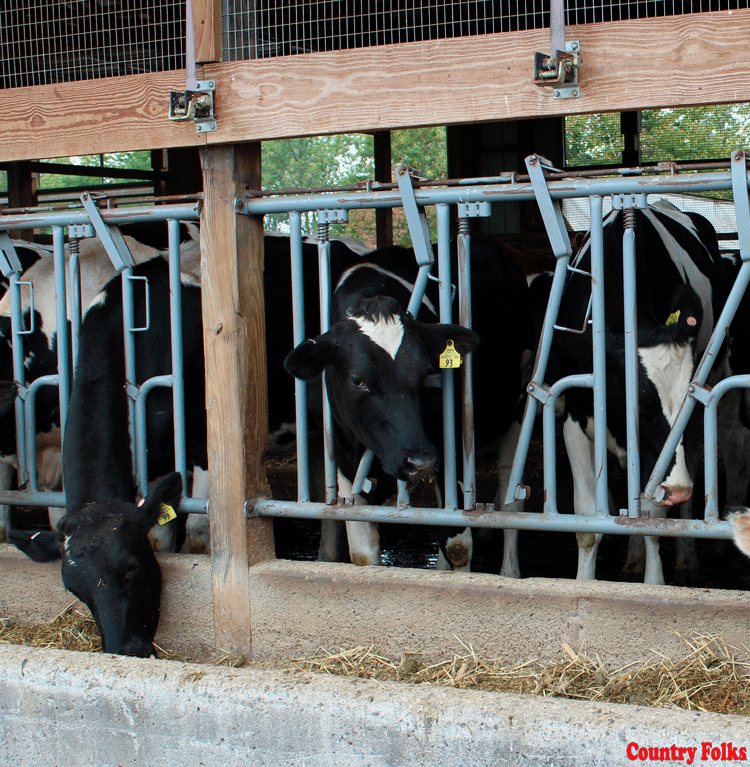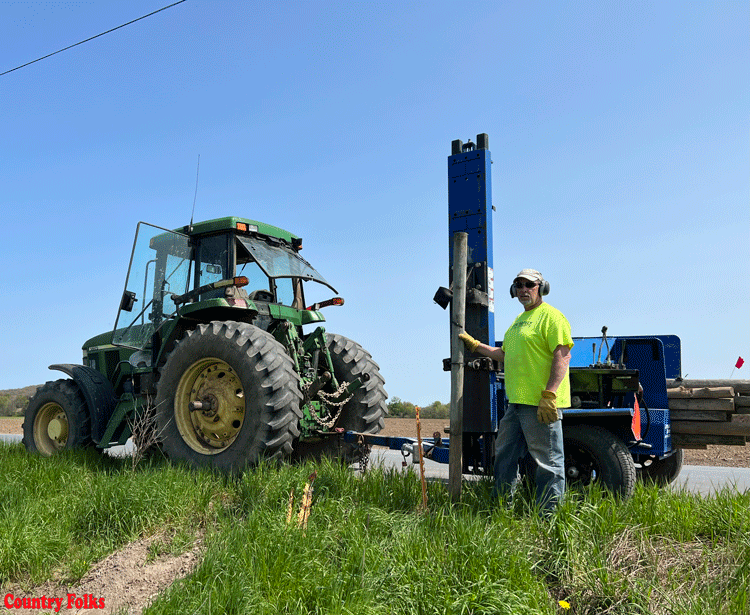by Tamara Scully
The Penn State Mastits and Milk Quality Conference featured speakers and researchers from several universities, and emphasized the need for a multi-faceted approach to manage mastitis. Addressing mastitis means focusing on prevention, identifying the organism responsible, taking steps to stop infection and appropriately treating cases of infection based on their etiology.
“Our ultimate goal is to prevent infection,” Gina Pighetti, Ph.D, of the University of Tennessee, said.
While vaccines can be useful, they can also be challenging to use effectively. Depending on the infecting organism, vaccines may not be the best response. Even when vaccinating can be helpful, the timing is critical. Vaccination should not be the only protocol being used on the farm.
“It (vaccination) cannot overcome other factors,” Dr. Pighetti said.
Keeping cows in a clean, dry environment, decreasing stress by increasing cow comfort and decreasing stocking rates, and controlling transitions diseases such as ketosis and hypocalcemia are imperative.
Having protocols in place which remove all dirt from the teats prior to milking, and prevent the spread of contagious mastitis from cow to cow, should be consistently followed.
Vaccine efficacy
“Current vaccines are geared toward increasing antibody levels,” Dr. Pighetti said.
One issue with vaccination effectiveness is due to the difference between the levels of antibodies seen in milk, versus the level in the bloodstream. While the levels of antibodies seen in the blood following vaccination are elevated, the levels seen in the milk are much lower, by a factor of 100-1,000. The levels of the vaccine’s antibodies present in the milk may not actually be enough to prevent infection from occurring.
When bacteria enter the epithelial cells, the body will respond with inflammation, redness and heat, the clinical signs of mastitis. This inflammatory response eventually causes a change in salt concentration, which in turn causes a “leakiness” to occur. This leakiness enables immune response factors from the blood to enter into the mammary gland to help fight off infection. This means that antibody levels do not increase in the milk until after an infection has occurred, Dr. Pighetti explained.
While a vaccine will increase the amount of antibodies in the blood system, this increase is of relatively short duration. So it’s impact may be gone by the time the bloodstream antibodies are called in to fight a mammary gland infection. A booster shot would be needed after about two weeks to keep the immune response going.
“Immune cells need time to grow and proliferate,” Dr. Pighetti said. “You need to time your vaccinations to when you see your problems.”
When to use vaccines
There are two vaccines available in the United States for mastitis. One treats mastitis caused by gram negative bacteria, such as the coliform bacterias including Escherichia coli. These tend to cause mastitis seasonally, or during certain stages of lactation. Timing of a vaccine protocol should concur when outbreaks are typically seen on the farm.
Some mastitis is seasonal, occurring during periods of heat stress. When cows suffer from heat stress, their immunological function decreases. Bacterial activity also increases with heat, and this combination often triggers mastitis. Vaccinating at this time won’t necessarily decrease the number of cases seen, but should decrease the severity and duration of clinical cases, Dr. Pighetti said.
Because the effectiveness of vaccines depend upon the antibodies finding and targeting the infecting agent, problems arise when the mastitis-causing bacteria can “hide” from the antibodies, eluding detection. Staphylococcus aureus and Streptococcus uberis are two organisms which can not be readily detected by the antibodies, rendering vaccination ineffective.
There is a vaccine available for Staph. aureus, however. This bacteria causes subclinical mastitis, because it typically does not cause a large clinical response, thereby limiting the influx of antibiotics into the milk. This lack of inflammatory response allows the bacteria to enter into mammary gland tissue and “hide” from any targeting antibodies. Because the bacteria easily evade antibodies once established, the best chance at preventing chronic mastitis is during the early stages of infection, but no symptoms are evident then. Transmitted during milking, Staph. aureus infections are readily spread due to their sub-clinical nature. Consistent cultural practices during milking are the best means of preventing sub-clinical mastitis.
The available Staph. aureus vaccine is best used on heifers, Dr. Pighetti said, where it can have some effect on reducing the spread of this contagious mastitis via flies, as well as reducing the transmission rate during calving. Vaccinating when new cows are entering the herd is a good practice if Staph. aureus is a problem. Culling the herd to reduce the impact of sub-clinical mastitis is often necessary.
Beyond vaccines
Genomic predictors look at the DNA. Based on certain genetic markers, they are used to predict milk production, productive life and other traits. A gene known as CXCR1 is important in the immune response. The presence of different genetic markers here could potentially predict which cows would have a more effective immunological response to infection. In Pighetti’s research studies, Strep. uberis — for which no vaccine currently exists — was introduced three days after calving.
Cows with certain CXCR1 genetic markers showed an increase in inflammation, and cleaned the infection well, while others without the markers developed chronic, low-grade mastitis. This type of marker-based system can be used to select cows more susceptible to antibody use.
This type of genetic research can “help find that super cow that can fight off an infection every time,” Dr. Pighetti said.
Other research is aimed at trying to develop more effective vaccines for common mastitis agents. Some research being done at the University of Tennessee is focusing on adhesion molecules, found on Strep. uberis and other environmental Strep. species, she said. This adhesion molecule, known as SUAM,, helps the bacteria to adhere to and invade mammary cells.
Antibodies can help to prevent this binding and subsequent internalization of the bacteria into the cells. Using vaccines to increase a cell-mediated response, where macrophages, T-cells and T-cell helpers are activated in a highly inflammatory response may be another way to improve mastitis treatments.
“We need to shift the immune response,” Dr. Pighetti said. “We can drive it towards an antibody-mediated process, or a cell-mediated process.”
Preventing mastitis is one of the best ways to increase milk quality and herd health. Cleanliness in and out of the parlor, the reduction of environmental stressors, and proper identification and treatment of mastitis cases are essential. Vaccines are only one management protocol available to producers. The aim is to use them effectively, when appropriate, and in conjunction with other preventative management protocols.
“Vaccines are a tool, not a solution,” Pighetti said. “Vaccination cannot overcome poor management.”











Leave A Comment